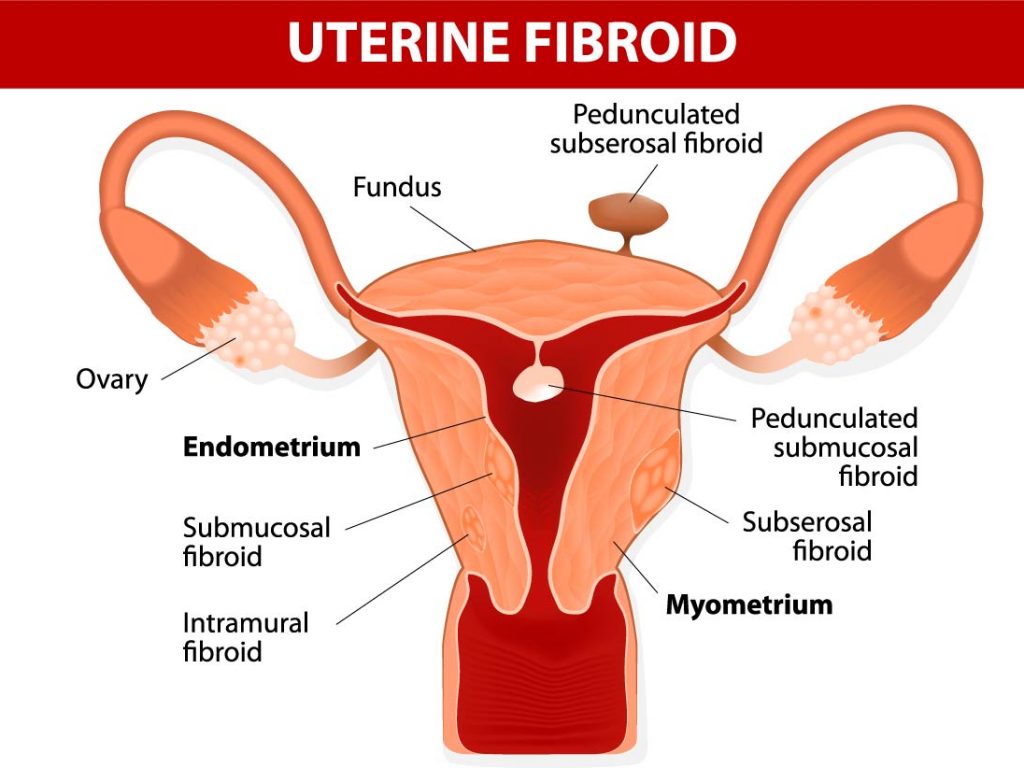Types of Fibroids
Fibroids are named according to their location as follows:-
Intramural fibroids are the most common type of fibroid and grow within the muscle tissue of the womb, beginning as small nodules which may cause distortion to the uterine cavity as they grow.
Subserosal fibroids grow from the outside wall of the uterus into the pelvis and can sometimes become very large. Occasionally they can be attached to the uterus by a stalk in which case they are known as pedunculated fibroids. When subserosal fibroids become very large, they may press on the bladder or other pelvic organs and become symptomatic.
Submucosal fibroids grow from muscle beneath the endometrium of the uterus and may distort the uterine cavity. A pedunculated lesion within the cavity is called an intracavitary fibroid. Even small submucosal fibroids may lead to bleeding or fertility problems because they originate just under the endometrium, which is the inner lining of the womb. They are not very common, only accounting for around 5% of cases.
Fibroids and Fertility
Only a very small proportion of fibroids are likely to affect fertility, probably less than 5% of them. There is still considerable scientific research and debate on this subject. It is likely that subserosal fibroids have little or no effect, whereas submucosal fibroids are more likely to have an effect because of their position just under the lining of womb. It has been suggested that large intramural fibroids may in some cases alter the blood flow to the uterine lining as well as altering the shape of the uterine cavity.
There can be considerable variation in the presentation of fibroids however, and whatever the type, there are four main ways in which fertility might be affected. Firstly, excessive fibroid growth may affect the blood supply to the endometrium reducing its receptivity to the embryo. Secondly, the uterus may become slightly enlarged or distorted by the presence of a fibroid and a cavity with an abnormal contour could prevent normal implantation. Thirdly, distortion of the cervix or uterus might prevent effective progress of sperm. Finally, segments of the fallopian tubes could be obstructed by the fibroid, preventing effective fertilisation of the egg and subsequent transport of the resulting embryo.

